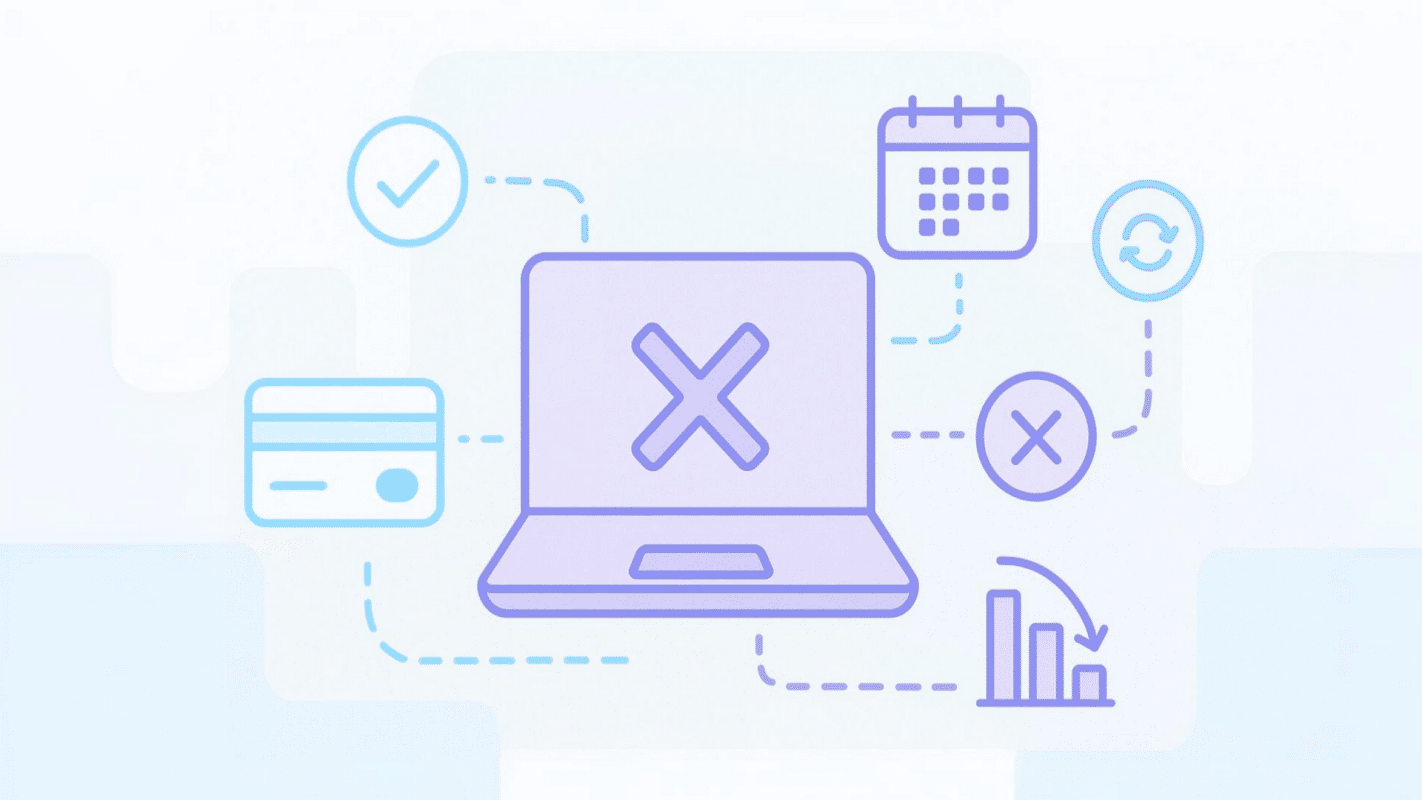SaaS 支付
什么是 SaaS 支付拒付率?
发布时间: 2025年8月19日

什么是 SaaS 支付拒付率?
SaaS 支付拒付率是一项衡量指标,用于确定客户支付尝试被支付处理商或发卡银行拒绝的百分比。这是衡量订阅业务健康状况的关键指标。
计算公式如下:
拒付率=(尝试交易总数÷拒付交易数量)×100
但请记住,您必须始终区分以下两种拒绝情况:
- 软拒绝: 这些是暂时性故障,通常是由于资金不足或网络问题等原因造成的。这些问题通常只需重试交易即可解决。
- 硬拒绝:这些是永久性故障,原因可能是卡被盗或丢失,或者卡详细信息无效。这些问题需要客户直接干预,以便更新其付款信息。
是什么原因导致支付失败对SaaS公司如此重要?
支付失败会产生重大后果,因为它们会直接影响SaaS商业模式的核心。它们的负面影响波及整个公司,并导致:
- 直接收入损失: 每笔失败的交易都会造成相应计费周期内的收入损失。当数千名客户的损失累积起来时,这个亏损可能是巨大的。
- 非自愿流失率增加: 非自愿流失是指客户的订阅由于交易失败而被取消,而不是因为客户决定离开。这会削弱您的客户群,并对客户终身价值 (LTV) 产生负面影响,并且是最具破坏性的后果。
- 更高的运营成本: 您的财务和客户成功团队将需要花费宝贵的时间和资源来调查付款失败的原因、联系客户以及管理催款流程,这会增加开销,并对收入产生负面影响。
对于 SaaS 业务而言,什么是“良好”与“不良”的拒付率?
虽然这取决于行业、客户群和价位,但您可以考虑以下一般基准来衡量您的绩效:
- 优秀: 低于 5% 的拒付率非常出色。这表明您拥有强大的客户群和出色的预防及恢复系统。
- 平均: 对于许多SaaS企业来说,这是一个典型的范围。虽然有改进的空间,但这并不一定是一个危险信号。
- 差: 如果您的拒付率持续高于10%,则应将其视为一个重大问题。此比率表明严重的收入损失和非自愿流失的高风险,应立即将其列为优先事项。
SaaS企业如何管理其付款拒付率?
要成功降低比率,请使用两部分策略:在发生下降之前主动预防,并在发生下降时进行战略性恢复。
防止下降的预防策略
- 使用账户更新服务:这是一项服务(通常由支付网关提供),可自动与卡网络(Visa,Mastercard)通信,以便在您的系统中更新过期的卡号和到期日期,以免触发下降。
- 分析下降代码: 不要对所有付款失败一视同仁。通过分析处理器返回的具体失败代码,您可以采取相应的行动。
- 代码 51(资金不足):几天后再尝试付款,比如在通常的发薪日之后。
- 代码 14(无效卡号): 这属于严重付款失败。请立即要求客户更新其付款方式。
- 使用多个支付网关: 一笔交易被一个 支付网关 可能被另一个批准。智能路由系统可以通过辅助网关重试失败的付款,以提高整体成功率。
抢救失败付款的恢复策略
- 实施 智能重试:“智能重试”引擎不会随机重试失败的付款,而是利用数据在最佳时间重新尝试交易。例如,它会根据不同银行和卡类型的过往成功率,学习一周中最佳的日期或时间来重试扣款。
- 部署 催款管理流程:催款是指在付款失败时与客户沟通的过程。一个好的催款策略应该是自动化且用户友好的,并且应该包括:
- 自动电子邮件/短信:一系列带有明确行动号召的消息。
- 个性化消息:语气应该是有帮助的,而不是指责性的。
- 安全更新链接:允许客户直接通过电子邮件一键更新其付款信息,无需登录。
哪些软件可以帮助管理付款拒付?
虽然一些企业会构建自己的逻辑,但也有一些专门的工具可以自动处理拒付预防和恢复。
- 支付处理商 特点: 大多数主要系统都有内置工具。 PayPro Global 在其平台中提供复杂的、可定制的催款活动、智能重试和帐户更新服务。
- 第三方回收工具: 这些是与您的支付网关集成的专用平台。它们专注于支付回收,使用高级分析和经过验证的消息模板来减少 非自愿流失.
考虑与 记账商(MOR) 例如 PayPro Global。像 MOR 这样的综合解决方案可提供 SaaS 业务扩展所需的所有服务,从支付处理和全面全球税务合规到欺诈防护和可靠的收入回收工具。
结论
了解并积极管理SaaS支付拒付率对于保护收入、减少客户流失和建立积极的客户关系至关重要。通过实施AI赋能工具、使用多个支付网关、催款管理、账户更新程序和智能重试等策略,SaaS企业可以减少拒付并提高支付回收率。
积极主动的付款拒付管理方法不仅能够保障收入,还能提升整体客户体验,为可持续增长铺平道路。